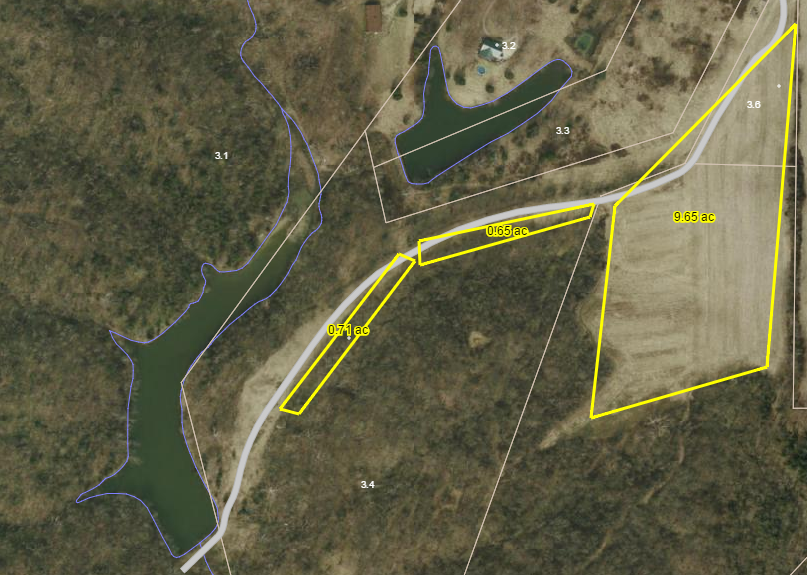What food plot crop should I plant in an area where lots of soybeans and corn are grown?
Filed under: Food Plots
Dr. Woods- I own about 40 acres of woods in Switzerland County Indiana and need some help choosing a food plot type. The area has a large amount of crops that rotate every year between soy beans and corn. The deer in the area seem to be very healthy every year. My direct neighbor farms 10 acres in soy beans or corn and that has me questioning what to plant. I know that your go to crop is soy beans. But would this also apply in this instance?
The large highlighted area on my attachment is the neighbors farm crop and the 2 smaller highlights is the area I want to develop.
Currently there are not any other food plots on my land. I would like to strategically plant other small plots to hunt over in the future.
Thanks for you time!
Doug Sturgeon
Douglas,
You are wise to realize that food plots rarely compete with commercial soybean and corn crops during the growing season! It often recommend Eagle Seed forage soybeans in such situations. Soybeans are relatively drought resistant, easy to maintain, etc. Eagle Seed forage soybeans are maturity groups 7 and 8. This means they will stay green and growing much longer during the fall than production varieties of beans that are usually maturity group 4 or 5. So – when the crop beans are turning yellow the Eagle Seed forage soybeans will still be green and likely the best forage in the neighborhood.
Eagle Seed forage soybeans often produce 30 – 50 bushels of beans per acre. This is 1,800 to 3,000 pounds of high quality feed per acre! In addition, I over seed the soybeans with Broadside (a mix of radishes, forage wheat, and brassicas) 45 to 60 days before the average first frost date during the fall. This results in tons of quality cool season forage in the same field where pods are available. Deer tend to eat the pods during days colder than normal and the greens during days that are warmer than normal.
This program has worked very well for me.
Enjoy creation,
grant
October 30, 2015




